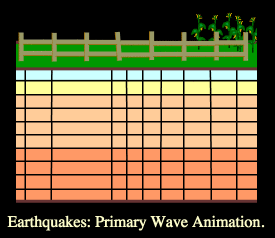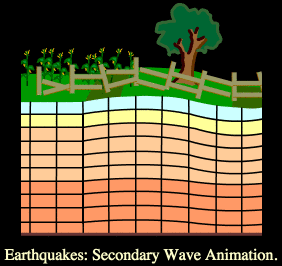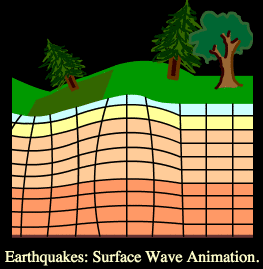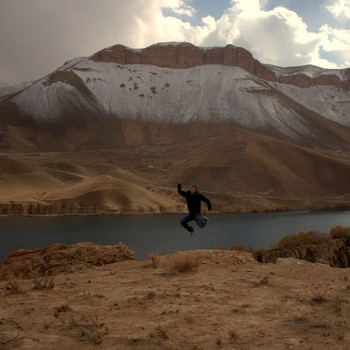What are the three types of waves generate during an earthquake?
1 Answer
1) Primary "P" body waves
2) Secondary "S" body waves
3) Surface waves
Explanation:
1) Primary ("P") waves
- the fastest traveling wave through rock, so it's felt 1st after an earthquake
- a type of body wave that pushes & pulls rock and liquid in the same direction as the wave moves

2) Secondary ("S") waves
- 2nd fastest moving, travels through solids only
- body wave that shifts rock side to side (at a right angle) relative to the direction of wave propagation:

3) Surface waves
- This group of waves is slower than P and S waves and act much closer to the surface of the Earth, hence the "surface" name:

- 2 types of surface waves are Rayleigh waves and Love waves which differ in what directions they shift the Earth's surface in:
- Love wave: moves the surface side to side, at a right angle to the direction of the wave.
- Rayleigh wave: moves the surface in a rolling circular motion, the same way ocean waves move : forward, down, back, up.
 )
)
Here's a visual summary of all the waves:
 )
)
Here's a seismogram measurement of the different types of waves over time from an earthquake:
 )
)
And here's a cool depiction of what types of waves that would be measurable from different parts of the world relative to the epicenter of an earthquake:
 )
)

